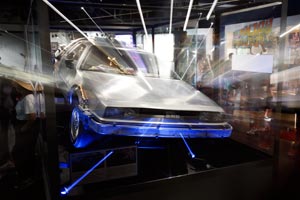Senior Reporter
Great Scott! ‘Back to the Future’ Innovations Are Possible by Passing Highway Bills, DOT Says

The country would be one step closer to enjoying safe flying cars on “flyways,” hover-boards and hover-conversion kits – innovations featured in “Back to the Future II” – if Congress was more consistent in passing multiyear transportation bills.
That is the argument Federal Highway Administration chief Greg Nadeau makes in a blog posted on the Department of Transportation’s website recognizing the ultimate ’80s trivia question: On what date did Marty McFly arrive in the future in “Back to the Future II.”
Answer: Oct. 21, 2015 at 4:29 p.m., better known as, “Back to the Future” Day.
In “Back to the Future II,” audiences are mesmerized by the society in which the film’s protagonist, Marty (played by Michael J. Fox), finds himself when traveling from 1985 to Oct. 21, 2015.
On that date, or this date, Marty is able to ride a hover-board, wear self-adjusting apparel, and is surrounded by automated service stations. Nadeau lamented that most of the technological advances the film’s creators envisioned have yet to be realized, but he expressed optimism.
“With an eye on the future, DOT is constantly looking for ways to build a better tomorrow, and our success will take the kind of ingenuity, innovation, and imagination that McFly and Doc [Emmett] Brown [played by Christopher Lloyd] relied on during their time-hopping adventures,” Nadeau wrote. “It also will take the kind of large-scale transportation investments only possible through a long-term, multiyear transportation bill.”
On Oct. 22, the House Transportation and Infrastructure Committee is scheduled to take up a six-year highway bill to see if they can get going on modernizing the country’s transportation grid, and helping engineers build those ol’ flux capacitors. In July, the Senate passed their version.
We didn't just sit and wait for the future; we've been building it. #BackToTheFuture https://t.co/A7PQ8prbug pic.twitter.com/R49sgIskH4 — TransportationGov (@USDOT) October 21, 2015




